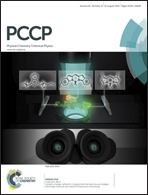The Crystal-T algorithm: a new approach to calculate the SLE of lipidic mixtures presenting solid solutions†
Abstract
Lipidic mixtures present a particular phase change profile highly affected by their unique crystalline structure. However, classical solid–liquid equilibrium (SLE) thermodynamic modeling approaches, which assume the solid phase to be a pure component, sometimes fail in the correct description of the phase behavior. In addition, their inability increases with the complexity of the system. To overcome some of these problems, this study describes a new procedure to depict the SLE of fatty binary mixtures presenting solid solutions, namely the “Crystal-T algorithm”. Considering the non-ideality of both liquid and solid phases, this algorithm is aimed at the determination of the temperature in which the first and last crystal of the mixture melts. The evaluation is focused on experimental data measured and reported in this work for systems composed of triacylglycerols and fatty alcohols. The liquidus and solidus lines of the SLE phase diagrams were described by using excess Gibbs energy based equations, and the group contribution UNIFAC model for the calculation of the activity coefficients of both liquid and solid phases. Very low deviations of theoretical and experimental data evidenced the strength of the algorithm, contributing to the enlargement of the scope of the SLE modeling.


 Please wait while we load your content...
Please wait while we load your content...